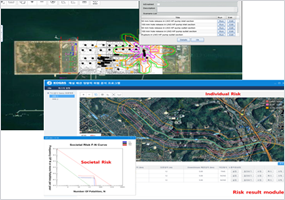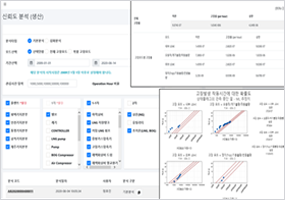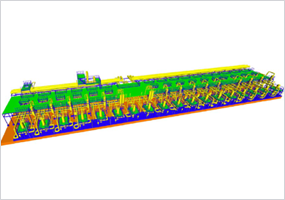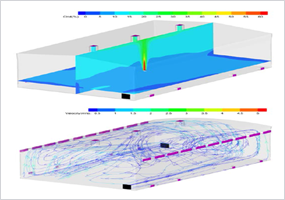KOGAS
Disaster Prevention & Safety Research
After the 1994 Ahyeon-dong gas explosion, KOGAS increased safety management in earnest. Since then, the need for scientific safety management has emerged, and a safety and disaster prevention research department has been newly established within the R&D Center to provide technical support. With a sense of responsibility and the mission statement “Safety is the best value of our corporation,” all employees operate our facilities safely today by making continuous efforts to ascertain causes of accidents and by taking countermeasures.
To support scientific and practical safety management, we have secured qualitative
evaluation technology for production and supply facilities, and have
successfully developed and applied quantitative risk assessment technology, which is
practically used in relatively few advanced countries. In doing so, KOGAS’s
safety research team is evaluated as the most proficient gas safety research team in
Korea. We have developed a buried pipeline risk assessment program to support
pipeline safety management.
We are also actively supporting our field departments by
resolving issues and suggesting countermeasures to problems in depth of burial,
collision with other structures, and vibration and stress caused by external
construction at the pipeline site.
The “’Exposed Gas Pipeline Monitoring System”,
developed to ensure the safety of underground exposed pipes, which are known to be
high-risk, monitors the structural safety of pipes exposed due to causes such as
subway construction. It is expected that KOGAS’s scientific safety management
capability will advance through this 24-hour monitoring system.
Through pipe repositioning technology, pipes are excavated then relocated rather than being moved when gas is supplied. This technique, developed in 2008, is considered the most cost-effective technology that does not sacrifice safety. Our safety research department aims to reach other advanced countries’ level by continuously developing and applying gas safety technology including the development of safety diagnosis technology for outdated facilities. In short, we are striving to make KOGAS accident-free.
Move left and right
| Strategic Goal | Securing Gas Facility, Safety Evaluation Technology |
|---|---|
| Main Tasks |
|
Core Technology
-
LNG Plant and Facilities Quantitative Risk Assessment Technology
- LNG plant/NG station quantitative risk assessment technology
- LNG plant/NG station reliability analysis system, and database construction
- Vent stack gas dispersion analysis system development and application
-
Consequence and Effect Analysis Following Hazardous Fluid Release
- Prediction of fire and explosion from LNG/NG Accidental Release using CFD and Integral theory
- Optimization of ventilation system through CFD analysis
-
Gas Plant Structural Safety Diagnosis
- Gas plant structural analysis technology
- Development of precision safety diagnosis system for gas supply facilities
-
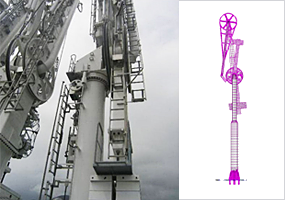
Unloading Arm and Modeling
-
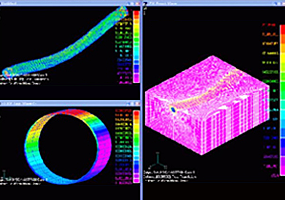
Result of Structural Analysis of Buried Pipe
-
Gas Facility Safety Monitoring System
- Exposed gas pipeline monitoring system
- Buried pipe stress and strain monitoring system
-
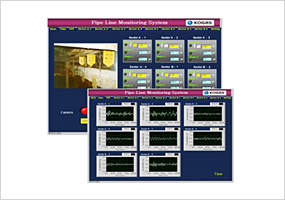
Exposed gas pipeline monitoring system
-
Buried Pipe Movement Technology
- Pipe movement analysis technology development
- Pipe movement monitoring system (pipeline stress, pipeline coordinates, etc.)
- Development of pipeline movement procedure
-
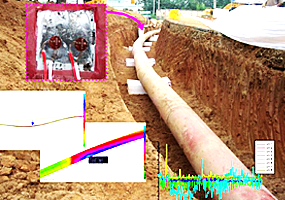
Buried pipe movement monitoring technology
-
Seismic Technology
- Development of KOGAS integrated earthquake monitoring system
- Development of seismic performance evaluation technology for production and supply facilities
- Development of expansion joints for gas pipelines to respond to ground subsidence and earthquakes
-
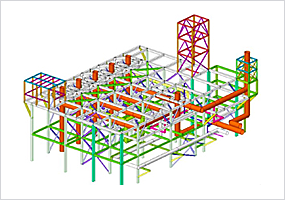
Seismic performance evaluation of LNG Terminal unloading arm (modeling)
-
Establishment of Underground Facility Demonstration Test System
- Establishment of an empirical laboratory capable of testing pipe stress, vibration shock, and pipe movement
- Development of a test for applying upper pipe load such as earth load, vehicle load, and construction equipment load
- The basis of future new pipe technology development

